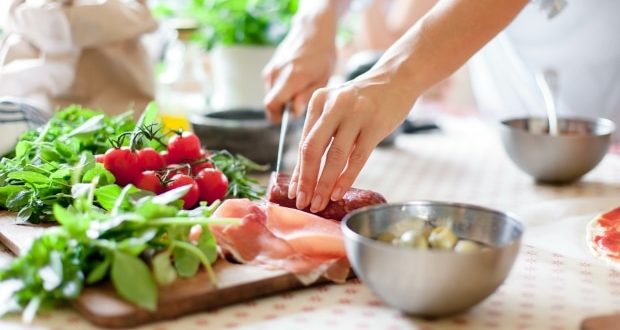Cooking is essential to give your body enough fuel to make it through each day, but not many people pratice sustainable cooking habits. The food industry centers on making food as tasty and exciting as possible, but those goals are not always the most sustainable practices.
While we must take care of ourselves and eat tasty meals, we also have a duty to take care of the planet we all share. Sadly, much of the food we produce goes to waste, and some of our most common habits drag down green efforts to protect the environment.
However, that does not mean we must choose between sustainable food and food we enjoy eating. By changing a few habits and being more aware of what happens to food once it leaves our view, we can enjoy delicious food while ensuring we do our part to take care of the only planet we have.
Some of the best green cooking habits to adjust start at home, and below are just a few ways to get your family on board with more sustainable eating to not only help the environment but also protect against common health issues like yeast overgrowth.
Use The Power Of Leftovers
Leftovers are a critical part of any home cooking routine and are especially important in sustainable cooking. It is all too common that meal portions turn out too big, or you don’t eat as much as you thought you would, and you have food leftover.
Do not throw out extra food, but instead invest in glass containers to safely store your leftover food for snacks or a meal tomorrow. Glass containers are better for your food than the classic plastic options because glass is microwave safe and does not feature the toxic ingredients that plastic containers contain.
You can get even more creative with leftovers by planning meals in advance. If you know you are going to make a full rack of lamb one night, you can count on plenty of leftovers for the next day where you can use the meat in a different meal like curry, so the same meal goes even further.
Rethink Your Drink Choices
When most people switch to a greener diet, they forget to switch drinking habits. Water should be your primary drink of choice as the average adult needs several glasses every day to stay adequately hydrated.
However, sometimes you want something other than water to drink, which is when you must consider your options. Sodas and other popular drinks often have too much added sugar to make them anywhere near healthy, while dairy products feed into sustainability issues.
Some of the best sustainable and healthy drinks are natural juices from fruits and vegetables or milk alternatives like soy or almond milk.
Sustainable Food Shopping
Part of cooking sustainable meals for your family is sourcing sustainable food. The best places to get natural healthy food are local farmers’ markets. Bring your own reusable bags you can color coordinate with some basic dyes, so you always know what you need to buy; bring a red bag when you need meat and a green bag for produce.
Shopping at local markets directly supports your community and ensures you are buying ethically grown food with no misleading marketing to hide pesticides or preservatives. If you do shop at stores, try to avoid the named big box stores and try to find a local grocery store instead.
Look for local co-ops, markets, or cultural stores to find better, healthier ingredients and potentially discover something new to cook. Various cultural stores are some of the best-hidden places to find new herbs and spices that can add a fresh kick to your existing meals without adding extra calories.
Eating healthy and sustainably is a goal every household should get behind and embrace, but sometimes getting started is the hardest part. Rather than giving up on the green goal, start with small changes to your meals that will make a difference over time.
Embrace leftovers and meal planning to make the most of your food. Reconsider your drink choices to avoid extra sugar and less sustainable options. Take the time out of your day to find a local farmers market or stores to buy your food to support your community and buy the best produce.







